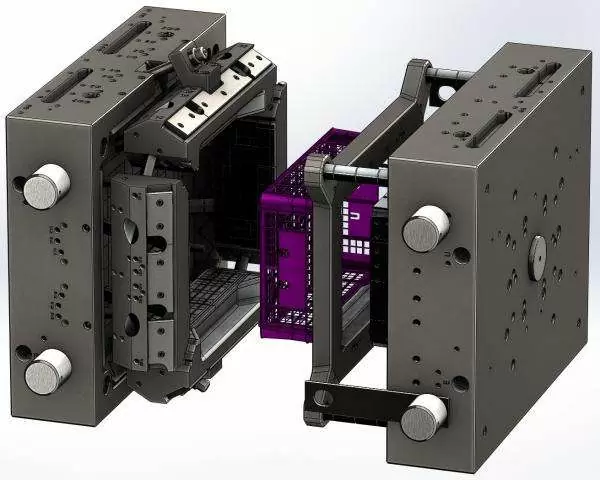There is arguably no part more important than the mold tooling of an injection molding project. Not only could your mold tool be the most expensive part of your entire injection molding process, an undetected error in your mold tool will be replicated over the thousands of parts to be made from that tool. The importance of quality mold tooling also extends into the process parameters and operational performance in making parts. Today, we look at each aspect of injection mold tools and the adverse effects that can arise as a result of poor design.
Understanding the Mold Tool
The mold tool is the master pattern or blueprint of the injection molding project. The mold itself houses the cavity and design layout of the part to be manufactured. During the injection molding process, the mold is filled with the hot molten plastic material, left to cool and solidify before it is ejected.
You may consider the mold tool as a photocopier that produces several identical copies of a job. Like the photocopier, the injection molding will only copy the exact detail, features, shape and geometry of the mold in making the part. The size, price and quality of mold tool is dependent on the material from which it is made, the volume of parts to be made from the mold tool and the purpose of the molding project.
Crucial Aspects of Mold Tool Design
There are several aspects of mold design that can flow into the processing parameters and quality of the molded parts. Here are the most important tooling quality parameters that can affect part quality:
1. Tool design
The tool design is very crucial to part quality as every part is simply a representation of it. With the amount of money expended in making a mold tool, it is very imperative that all the details, design and geometries are accurately captured. Design for manufacturing, also called DFM, should not be ignored in this phase.
The tool design should be robust and symmetrical, ensuring that the clamps can shut properly to prevent deflection and flash.
2. Cooing processes
The cooling phase of the injection molding process occupies a whopping 75-78% of the total cycle time. Cooling design is very important as molded parts cannot be made to cool non-uniformly, too quick or too slow. To mitigate this, ensure that your mold is made to reflect uniform wall thickness and where impossible, try to ensure that the transition between cross-sections isn’t steep.
From a process standpoint, ensure that cooling lines are not generic and made in relation to the part being molded. If you still have thicker areas in your parts, design those areas for more aggressive cooling than thinner areas while cooling lines should have minimal branches that will occasion a pressure drop in the system design.
Where possible, employ conformal cooling that match the shape of the part being produced. This system of cooling is more efficient and takes lower cycle time, although, the initial tooling costs can be higher than conventional cooling.
3. Mold venting
The vents of injection molding tools work just like any other vent. They perform heat exchange operations, allowing hot, compressed gases to exit the mold cavity and prevent gas accumulation.
If you have poor venting, gases will become trapped within your mold, occupying the space meant for your resin, and result in short shot. The pressure of accumulated gas may also result in flashing by forcing the resin material out of the cavity. Lastly, trapped gases may become very hot and result in cosmetic flaws such as burn marks on the final product.
4. Gating parameters
The two major gating parameters for injection molding tool are gate number and gate location. After the molten plastic part (resin) is injected through the sprue into the mold runners, the gate takes over and delivers the resin into the cavity. Bad gating design and insufficient amount of gates will delay the filling of the cavity or cause non-uniform fill in the cavity. For this reason, the gate positioning and number of gates should be optimized to ensure that there is complete filling and proper material flow.
5. Sprue selection
The sprue is a component in the mold design that connects to the receiving nozzle/inlet for the molten resin. There are 5 different types of sprue in injection molding, popularly denoted with the alphabets A to E. The choice of sprue to be used depends on the type of resin material, the pressure required, mold machine capabilities and more. Be sure to pick the best fit sprue for your project needs for optimal results.
First Part Injection Molding Services in China
FirstPart offers high quality, thermoplastic injection molding service for all your plastic part projects in China. We also offer low-volume manufacturing that serve small quantities from 50 to 10000 parts and produce for mass production. Our engineers are always available to advice on the best processes, materials and design optimization to ensure cost-savings, quick turnaround and the production of parts that are 100 percent defect and issue free.










